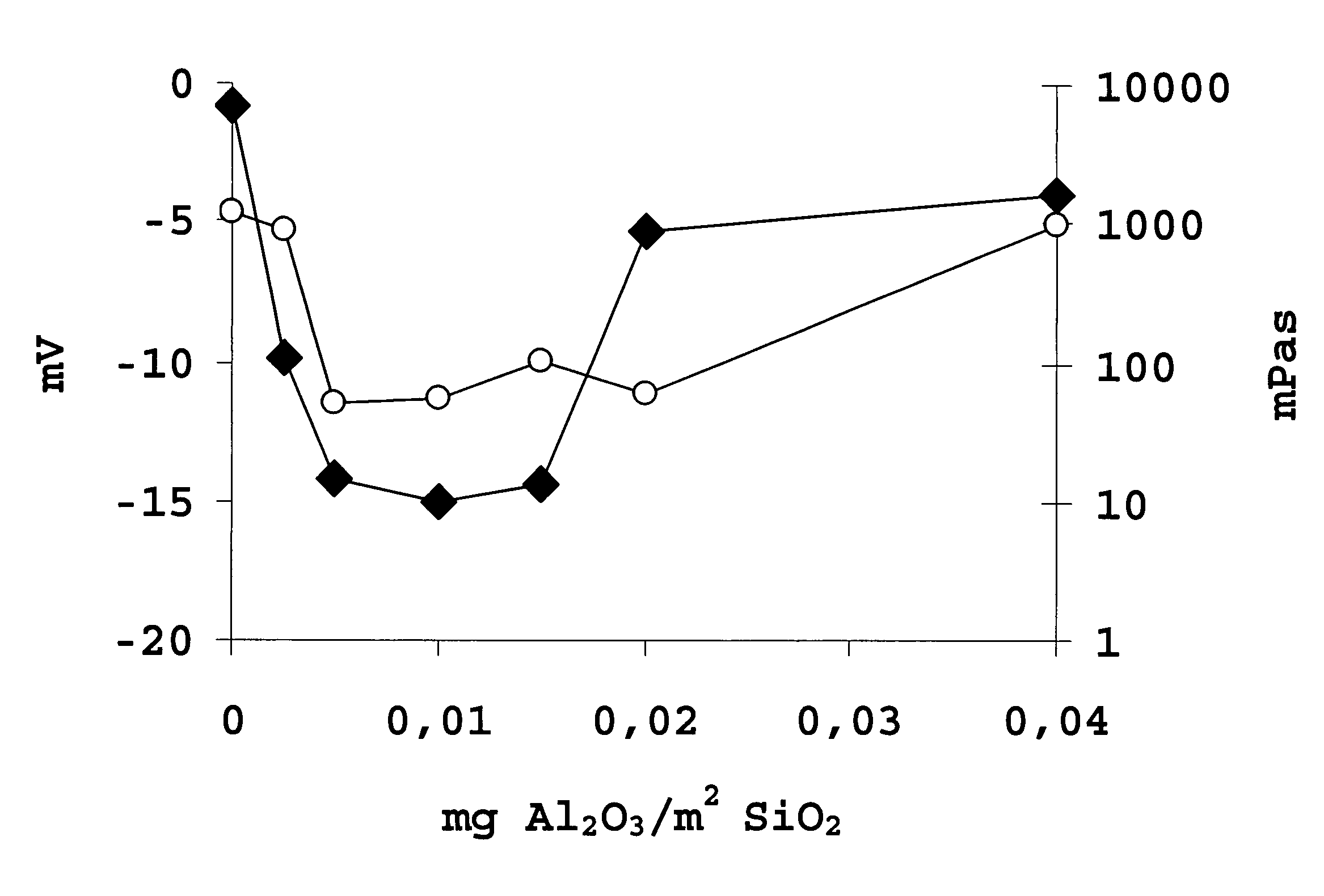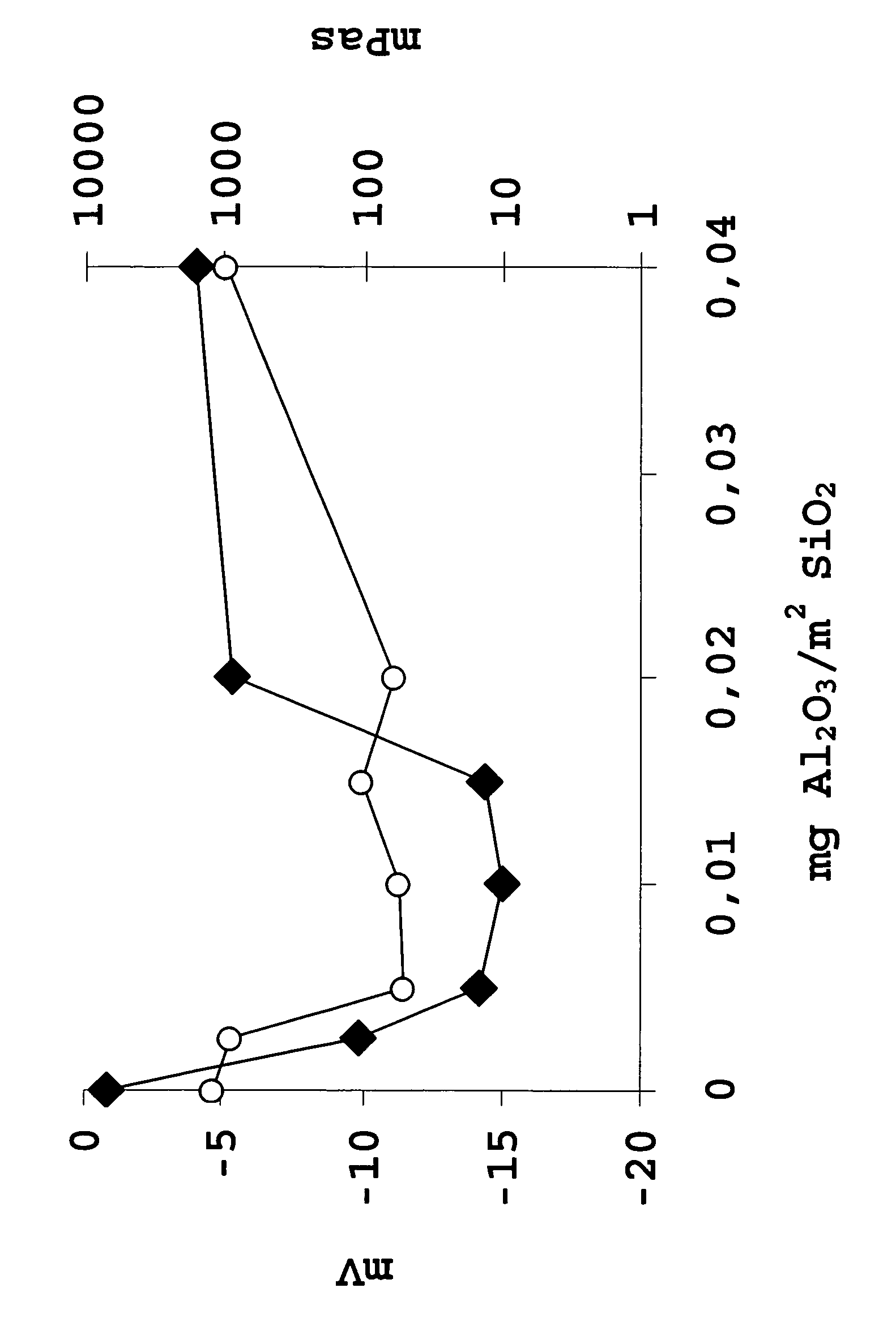Stabilized, aqueous silicon dioxide dispersion
a silicon dioxide and dispersion technology, applied in the field of aqueous dispersion, can solve the problems of no longer a silicon dioxide dispersion, and generally not stable in the acid ph range of silicon dioxide dispersions,
- Summary
- Abstract
- Description
- Claims
- Application Information
AI Technical Summary
Benefits of technology
Problems solved by technology
Method used
Image
Examples
example 1a
Reference Example
[0062]A 100 g amount of Aerosil 50 (BET specific surface area ca 50 m2 / g) was incorporated in portions into 385 g DI water using a dissolver at a setting of ca 1800 rpm. This processing resulted in a dispersion having a pH value of 3.5. The remaining amount of 15 g DI water was then added to achieve a 20 percent dispersion and this was then dispersed for 15 minutes at 2000 rpm and 15 minutes using an Ultra Turrax at ca 5000 rpm.
examples 1b-g
[0063]A 100 g amount of Aerosil 50 was incorporated in portions into 385 g DI water and 1.25 g of a 1 wt. % aqueous aluminum chloride solution (in relation to aluminum oxide), using a dissolver at a setting of ca 1800 rpm. This dispersion had a pH of 3.4, which was adjusted to pH 3.5 by adding 0.7 g 1N NaOH thereto. The remaining 13.1 g water were then added to achieve a 20 wt. % dispersion and this was then further dispersed for 15 minutes at 2000 rpm and 15 minutes with an Ultra Turrax at ca 5000 rpm.
[0064]Examples 1c-g were conducted in the same way as 1b.
example 2a
Reference Example
[0065]A 100 g amount of Aerosil 90 was incorporated in portions into 370 g DI water using a dissolver at a setting of ca 1800 rpm. The material was then further dispersed for 15 minutes at 2000 rpm. The pH value was then adjusted to 3.5 using 1N HCl and the dispersion was dispersed for 15 minutes with an Ultra Turrax at ca 5000 rpm. The remaining water was added to achieve a 20 wt. % dispersion and the pH value was re-adjusted to 3.5.
PUM
| Property | Measurement | Unit |
|---|---|---|
| BET specific surface area | aaaaa | aaaaa |
| size | aaaaa | aaaaa |
| particle size | aaaaa | aaaaa |
Abstract
Description
Claims
Application Information
 Login to View More
Login to View More - R&D
- Intellectual Property
- Life Sciences
- Materials
- Tech Scout
- Unparalleled Data Quality
- Higher Quality Content
- 60% Fewer Hallucinations
Browse by: Latest US Patents, China's latest patents, Technical Efficacy Thesaurus, Application Domain, Technology Topic, Popular Technical Reports.
© 2025 PatSnap. All rights reserved.Legal|Privacy policy|Modern Slavery Act Transparency Statement|Sitemap|About US| Contact US: help@patsnap.com


